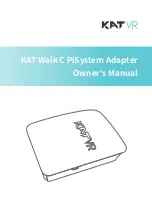
Specifications
Input Interface
Output Interface
Baud Rate
Supported Devices
Device Groups
Power Supply
Consumption
Operating Temperature / Humidity
Protection Class: front / terminals
RS485 for net control and data acquisition
RS232 for connection to PC
max. 9600 bps
up to 32
up to 8
mains adapter 9 VAC/DC
max. 90 mA
0...50 °C / 0...80% RH
IP54 / IP20
Warranty and Support
………………………….
serial number
………………………….
manufacturing date
QC check mark …….……(passed)
(stamp)
88 Slavyanska Str.
P.O.Box 378
Plovdiv 4000, BULGARIA
tel: +359 32 646523, 646524
fax: +359 32 634089, 646517
e-mail: support@comeco.org
QD-8.2.4-WC
Warranty
COMECO warrants this product
to be free from defects in materials
and workmanship for 2 years. If your unit
is found to be defective within that time,
we will promptly repair or replace it.
This warranty does not cover accidental
damage, wear or tear, or consequential
or incidental loss. This warranty
does not cover any defects caused
by wrong transportation, storage, installation,
or operating (see '
Specifications
').
Technical support
In the unlikely event that you encounter
a problem with your COMECO device,
please call your local dealer or contact
directly our support team.
COMECO Inc., P.O.Box 378, Plovdiv 4000, BULGARIA, tel: +359 32 646523, 646524, fax: 634089
e-mail: info@comeco.org, WWW.COMECOGROUP.COM
IA100
OPERATIO N MANUAL
Please read this Operation Manual before mounting and operating!
Save the Manual for future references!
Networking
Biasing
♦
When the network is in idle state,
all nodes are in listen (receive) mode.
Under this condition, there are no active
drivers on the network. All drivers
are tri-stated.
♦
Without anything driving the network,
the state of the line is unknown.
The logic level at the output
of the receivers, when the line is
in this state, is '1', which, according
to RS485 specification, is coded
by at least of 200 mV voltage drop
between
B
and
A
data lines.
♦
In order for the interface adapter
to maintain the proper idle voltage state,
bias resistors must be applied to force
the data lines to the idle condition.
♦
Bias resistors are nothing more than
a pull-up resistor on the data
B
line
(typ5 V) and a pull-down
(to ground) on the data
A
line.
The value of the bias resistor
is dependent on termination type
and the number of nodes in the system
as well as the load impedance
of the node receiver.
The goal is to generate enough
DC bias current in the network
to maintain a minimum of 200 mV
between the
B
and
A
data line.
♦
On the other hand, to reduce
the consumption and to assure a stable
'0' state on the line, we recommend
a value of
B
-
A
voltage drop of less
than 500 mV.
Protection against
electro-magnetic interferences
A good decision to protect the network
against inductive spikes is connecting
the signal grounds of all nodes
to the earth via 100
Ω
resistors.
Networking
Wiring
♦
Use two-wire half-duplex communication.
♦
Note that the signal ground line
should also be connected to the system.
This connection is necessary for keeping
the V
cm
common mode voltage
at the receiver within a safe range.
The interface circuit may operate
without the signal ground connection,
but in such case, reliability
and noise immunity may be sacrificed.
♦
To configure the network,
use a shielded cable with at least
two dedicated pairs of wires.
The shield must be one-point connected
to the signal ground (the ground terminal
of IA100 is preferable).
♦
Use one of the dedicated pairs
as a communication line
and the other one
as a node-grounding conductor.
♦
Using more than 32 nodes
is not recommended.
Important note:
According to the RS485 specification,
each node has a load impedance
of 12 k
Ω
. Thus, the total number
of nodes is restricted to 32.
Since there are interface chips
with higher receiver load impedance,
which allow extending
the total number of nodes,
we recommend you to measure
the load impedances
during network configuration.
INTERFACE ADAPTER
v1-
12.0
8




















